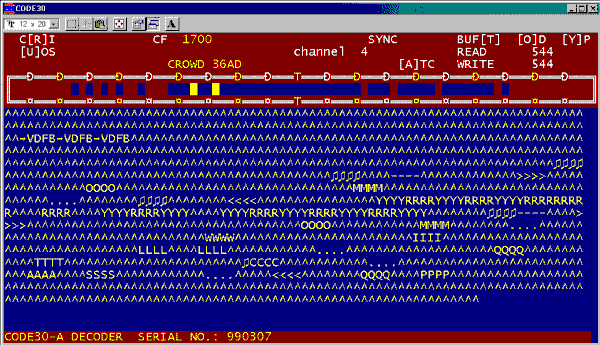A Soviet MFSK system using 36 tones based on British Piccolo MK1. CIS Diplo service is the main user with suspected use by CIS Intel and Military services. This system is found at 40 bd with a single tone lasting 25ms. Hand keyed traffic is usually 10 bd with a single tone lasting 100ms. A spectrum analyzer will show the tones arranged in 3 distinct groups of 10+11+11 tones. Tones are spaced 40Hz apart and tones 1, 12, 24 and 36 are rarely used so you are likely to see an 80Hz gap between groups. Each of the 32 tones represents one ITA2 character code. Also known as CIS/Russian Piccolo, URS multitone, CIS 10-11-11 MFSK or CIS-36. ITU documents have listed 4 different kinds of CROWD36 that vary with tone duration and baud speed. The '*' entries below are commonly heard.
+----------- tone duration (ms)
| +------- shift between tones
| | +--- tones present signal
v v v
Russian Piccolo 1 25 40 34 * 40bd
2 25 10 34
3 100 40 34 * 10bd
4 100 10 34
A few distinct patterns can be detected in a CROWD36 signal: selcal,
idling and sending traffic. Selcal and idling are a series of 5 tones
repeated in the same pattern. Traffic mode is most commonly, but not
always, found as 40bd encrypted and many times operator traffic can be
found in the clear at 10bd. Start-up and sign-off are usually 10bd and
hand keyed.